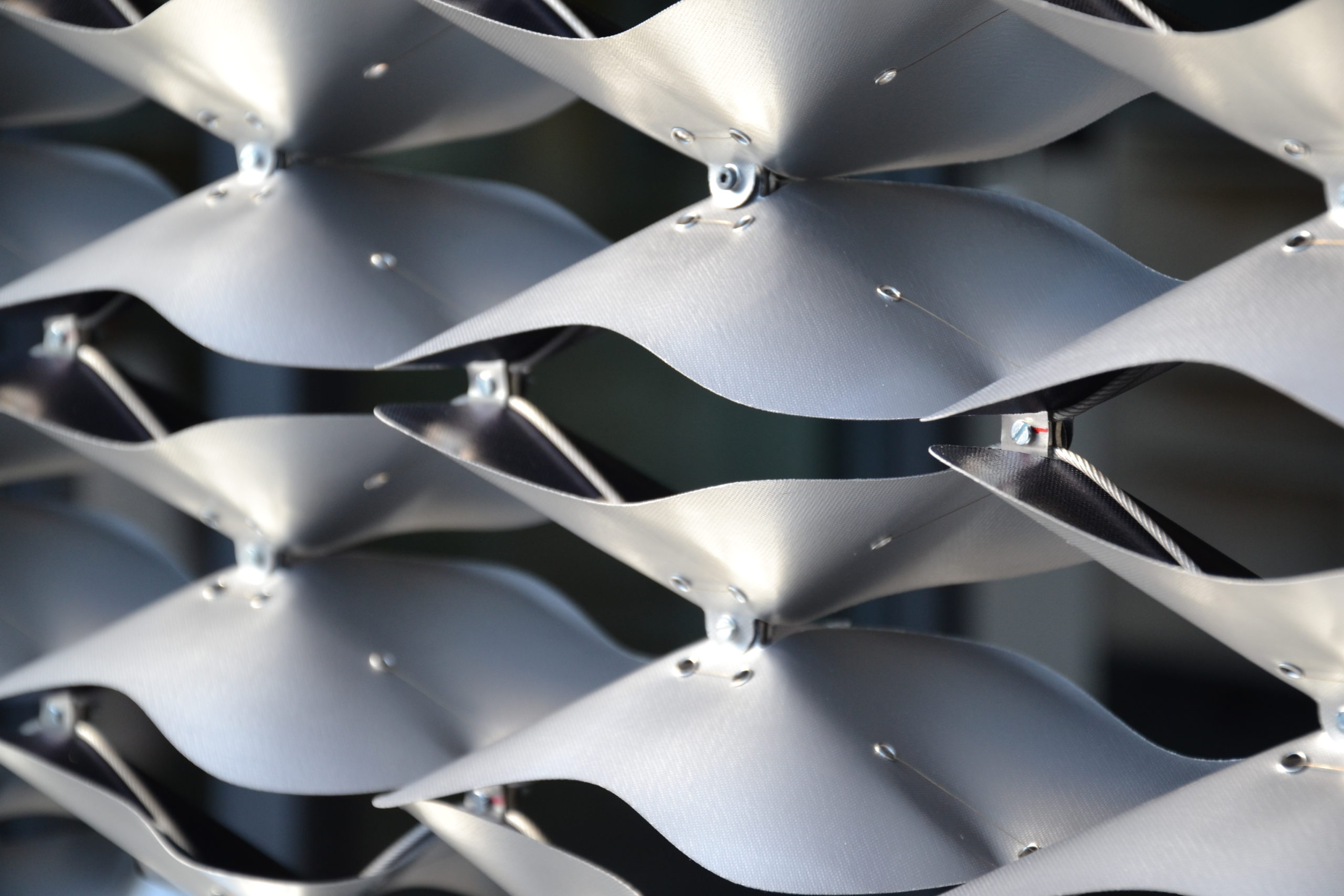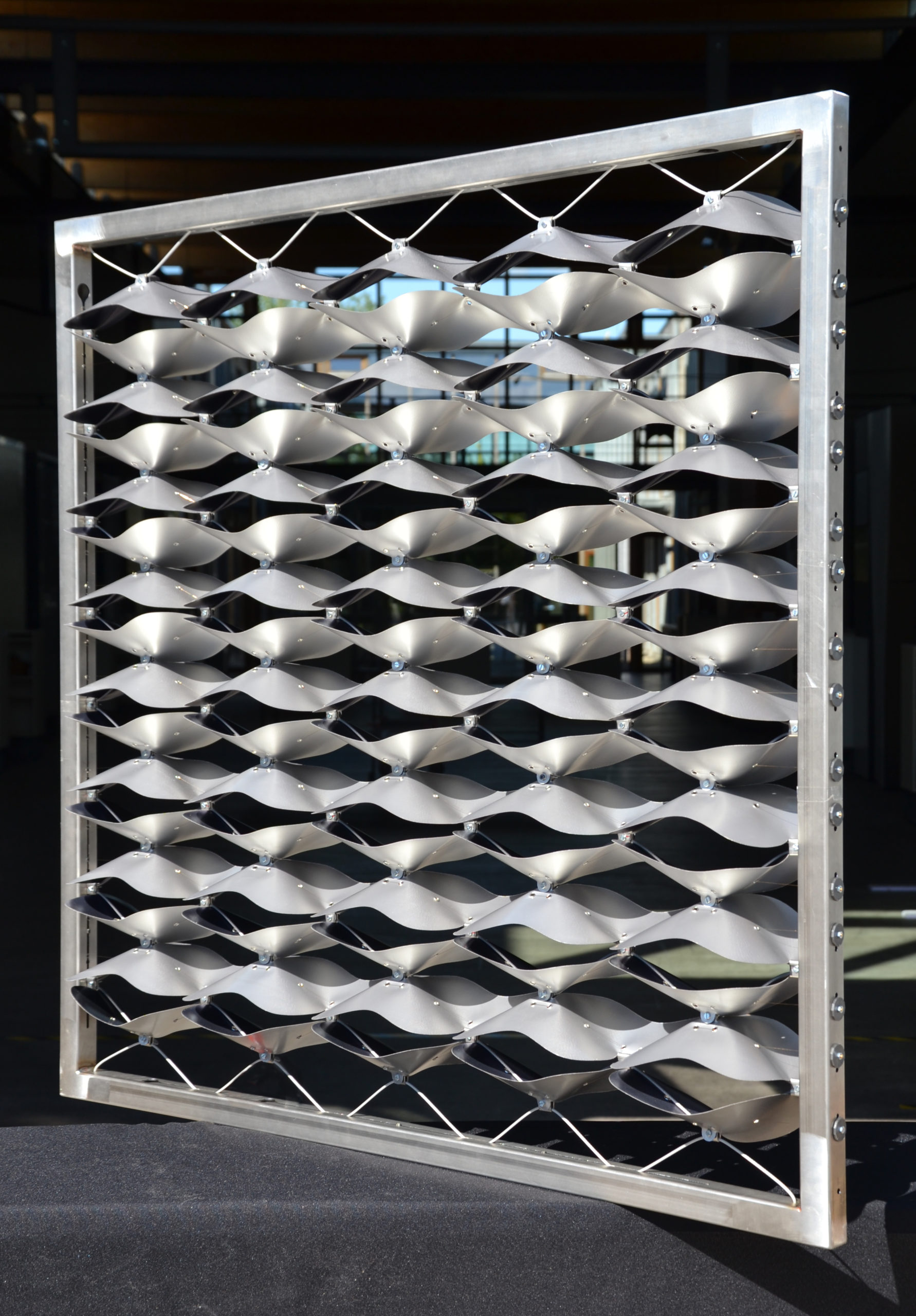Towards a Textile Metabolism in Architecture
by: Maxie SchneiderDynamic textiles enabling adaptive architectural components
The thermal responsiveness of facades to environmental influences has become the major scope of interest during the work on the joint R&D research project Adaptex. Programmable materials with a calibratable micro- or mesostructure, set the base for dynamic textile surfaces that regulate the energetic performance of a building. Especially in surface-active structures, a dialogue between material and geometry is imminent and soft deformations are likely to textiles bending, buckling, and snapping properties. Hereby also the architectural concept of “stability” is questioned while “elastic resilience” is preferred.
By the digital representation of material parameters, we enable computer-aided product development and structural optimization. In the future, we will be describing programmable and intelligent materials in a discrete and predictable manner in order to efficiently design building components that contain polyvalent functionalities.
Maxie Schneider is a Berlin-based architect and researcher. Her work is driven by visionary ideas reaching out into the fields of material engineering and computational design. She has been working with air, plastic, and textile-concrete as building materials in between structural innovation and hybrid tectonics. Currently, she is working on an autarkic, adaptive, textile shading device for facades, employing soft geometric deformations.
dxm-berlin.de/adaptex
maxieschneider.com


